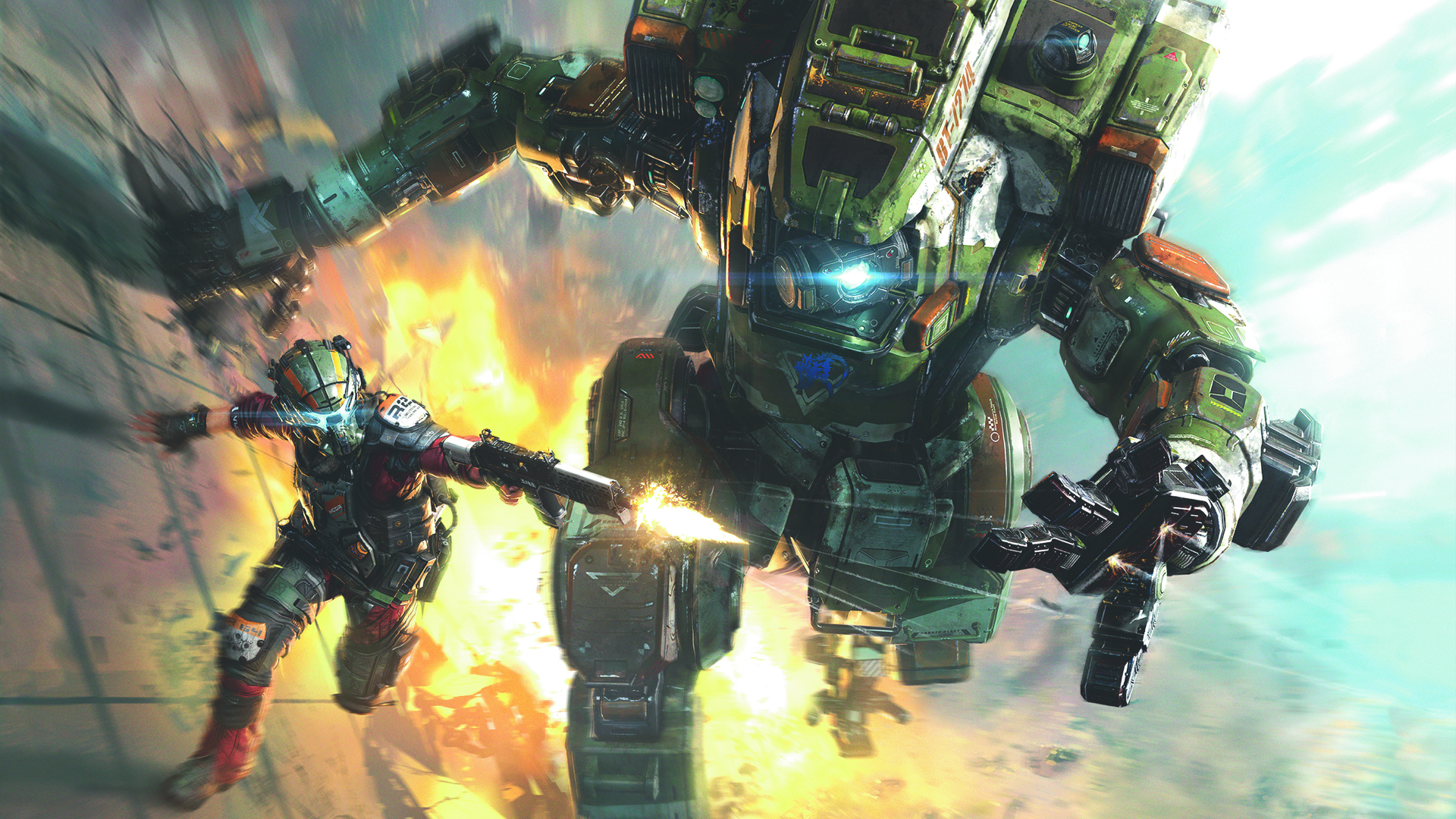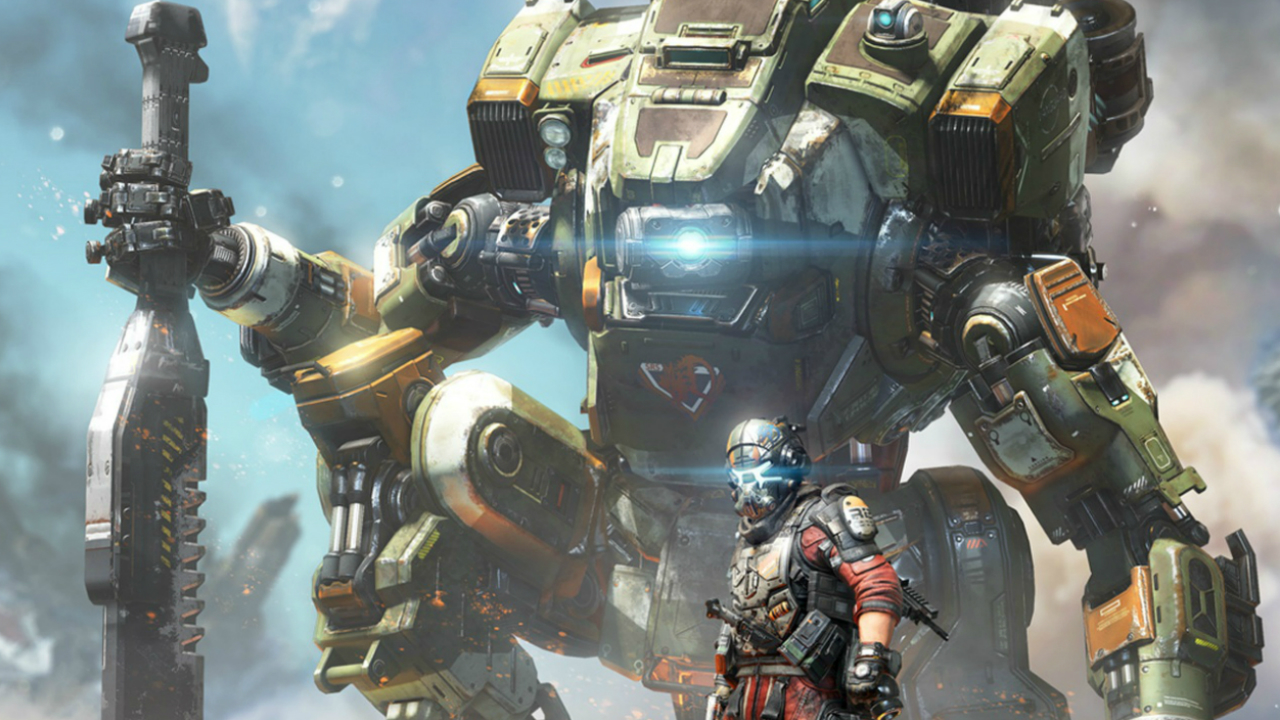How Titanfall 2’s secret, high-level game blesses a modern shooter with long-lost, old-school purity

Titanfall 2 is a bloody brilliant FPS. Our Game of the Year, 2016, in fact. Even when we gave it that award, we didn’t actually know quite how good it was. Out of the box, the immediate experience is excellent. A brilliantly inventive campaign, and solid gold multiplayer, all underpinned by seamlessly flowing, parkour shooting. Great stuff. But now that it’s been out in the wild for a few months, Titanfall 2 has started to turn into a different, even more interesting game. One that was hidden in plain sight all along.
It turns out that for all of Titanfall 2’s immediate depth, there’s actually a whole lot more hidden under the surface. A swathe of game-changing new tricks, techniques, and entirely different ways of playing, all built into the game, but that the game never tells you about. Over recent months, the T2 community has discovered and latched onto this stuff, and words long-since dropped from the FPS vernacular have come back into the conversation. Words like “Quake”. And “Bunny-hopping”. And “Strafe-boosting”. A plethora of physics-bending, speed-doubling traversal techniques that subvert the game’s usual rules and limitations. And this has led to new play styles, which has highlighted new uses of previously overlooked weapons.
The cumbersome, long-range EPG-1 rocket launcher has turned into an elegant, dextrous, mid-range duelling weapon, its purpose and functionality completely changed by a faster, bouncier – and yes, more Quake-like – take on Titanfall’s traditional free-running. Grapple-boosting has turned Pilots into light-speed Spider-Men. With a few sharp button toggles, a change to controller layout, and a lot of practice, it’s now possible to get from one end of a map to the other in a few seconds. Heck, it turns out that by blasting yourself with one of your own grenades - with perfect timing - you can pretty much move faster than time itself.
Of course, none of these techniques is entirely new. Variants of them have been around since the heyday of ‘90s and ‘00s arena shooters, when players started to discover control exploits within the physics of certain game engines that allowed them to see through the Matrix and go full-Neo on the likes of Half-Life, Doom, and Quake. Using the shockwaves of rocket explosions to boost the momentum of jumps. Steering into strafes to accelerate to higher speeds by manipulating the weird kinks of Source. Hell, even versions of Mario Kart and Smash Bros. have contained similarly useful oddities, in the days before Nintendo decided that Snaking and Wave-Dashing were cheating and removed them from their respective series.
This sort of play, with its focus on the long-term discovery and honing of pure technique, was the lifeblood of a whole generation of shooters, these games’ systems - by accident or design - delivering a raft of high-level potential beyond their ostensible offering. Learning this stuff was a tough, optional road, but immensely rewarding, turning play into a kind of art, and making every success far more personal. There was no need for big expansion plans with those games. Yes, there were updates, and on PC, the community created loads of its own content via modding. But with such long paths of skill development within the fabric of the games, the playing was always the real focus.
I’ve felt that the big shooters have been losing this sort of thing, progressively, over the years. With expansive weapon unlock systems, in-game (and real-money) currency markets, pre-order bonus gear, and map-and-mode season passes nigh-religiously adhered to as the means of maintaining a game’s long-term, online appeal, they’ve slipped into a pattern of presenting their longevity with an emphasis on explicit (but controlled) width of content over depth of gameplay.
I mean obviously it works. The huge games are still huge, and season passes must be selling, otherwise they wouldn’t still be happening. But I can’t help feeling – as I have for a long time – that to some degree we’ve traded true mastery for levelling up, and the art of skill-honing for the process of stuff-collecting. I’m not saying that these games aren’t demanding, or that they don’t have depths of their own to plumb – map knowledge, dexterity, team co-ordination, and overarching strategy remain vital – but games like Titanfall 2 and the aforementioned old-schoolers have a different kind of depth. And including it is important. As well as giving the player more ownership over their own experience, it simply lets a game appeal to more people, over a much longer period of time, long after the DLC runs out.
Weekly digests, tales from the communities you love, and more
It isn’t the only way of adding organic depth, of course. Overwatch does a great job of facilitating the long-term evolution of class-based strategies in its team-driven play, and the meta-tactics of character builds in Destiny’s Crucible are a different angle again, albeit one slightly dependent on constant, semi-random gear drops. But there’s a direct purity to Titanfall’s brand of of evolving control depth that has an experiential value all of its own.

Titanfall 2 does indeed have a weapon unlock system, but it works very differently to the nigh-endless cavalcades of kit you’ll find in some of its rivals. It becomes clear after just a few days that the standard assault rifle you start the online game with is as good as any other gun available. The reason for the later variety is simply, well, variety. Different guns let you play in different ways. Not necessarily better ways, or more effective ways, but ones that encourage different combinations of skills, load-out gear, and strategy. And more crucially, just different ways of thinking about the game. Titanfall 2’s unlocks are a great garnish, and give the game a healthier, wider set of foundations to explore, but they never distract from the path of real progress, which fundamentally, is always about developing moment-to-moment, systemic skill.
I do wish we saw more of this in big, multiplayer games, but I think I understand a few of the reasons we don’t. Perhaps part of it is a perception of fairness, a desire to maintain a level playing field by ensuring that player power-levels are at least partially dictated by grind-guaranteed gear rather than the use of arcane, high-level techniques. A level-by-level unlock system is a means of controlling players as much as it is empowering them, after all.
Plus, probably more importantly, XP bars and levels caps provide an immediate and very easily quantifiable sense of progress. Certainly a more addictive player-retention system for most than the steady honing of high-level skills. Thus, that system’s sanctity needs to be preserved, and a systemic lock-down is fairly vital to that. There’s no point setting up an elaborate reward system if a player can just master rocket-jumping and veto the advantages of later gear drops.

But Titanfall 2 proves that it isn’t an either/or situation. You can install your game with a long-term Advent calendar of new toys without having those toys dominate. You can give your systems long-term flexibility and scope for a spiralling ‘expert’ game without hampering the middle-ground players, or becoming elitist. You can deliver a game that works for everyone, giving immediate fun and power to the pick-up player, while providing hidden depths that cater new options in a bunch of different directions, without bottlenecking success along any one path. Good job, EA and Respawn. And please stay away from the patch button. Intentionally or not, Titanfall 2 is working out just great as it is.



